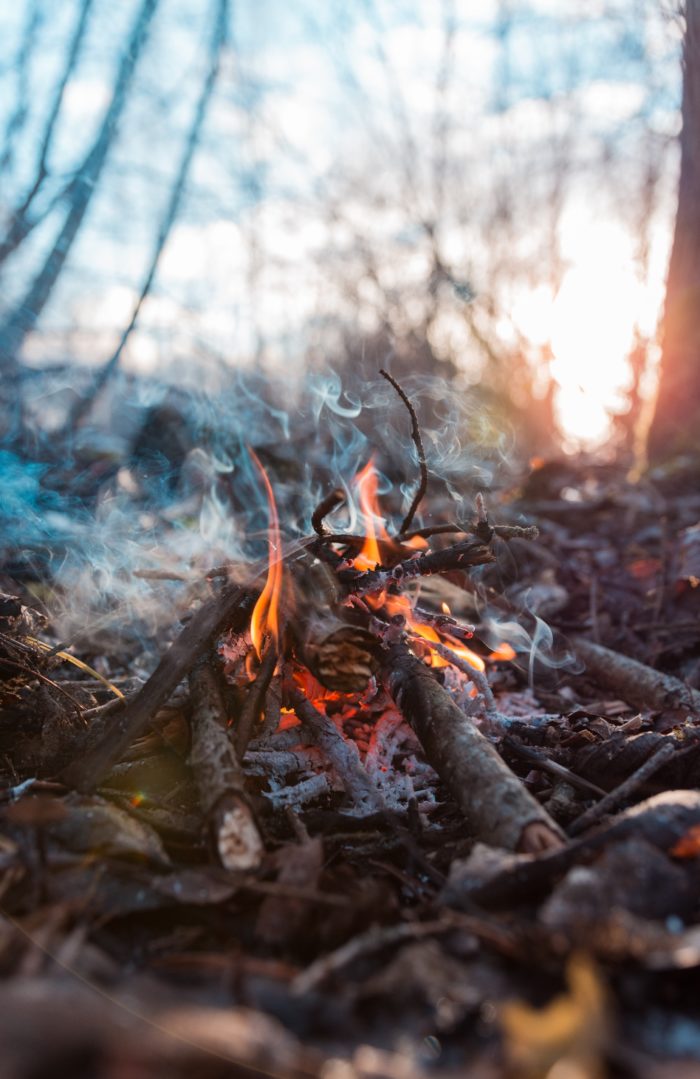Every summer, it seems like the heat gets a little harder to bear—for us, and for the planet. Case in point: right now, the Arctic is burning.
It’s not unusual for the Arctic to experience a few wildfires every summer. In fact, it’s a regular occurrence across the region each year around this time. It may sound a little strange—we usually imagine the Arctic as completely covered in ice, but the truth is that the terrain can vary.
But this summer, the wildfires in the Arctic have reached a new extreme. They began burning in June, usually as a result of lightning strikes in dry areas of the forests. But the number and sheer intensity of the wildfires has scientists concerned. These aren’t just ordinary wildfires: they are so large that they can be seen from space. Russia, Alaska, and Greenland are all being affected by these wildfires, and higher than average temperatures are making them more destructive.

Since the wildfires are spreading further than they would during a normal summer, they pose a greater threat. And it’s not just in terms of physical destruction—they’re also releasing more carbon into the atmosphere. Typically, only the forests would burn, but this year, the wildfires are so extensive that they are also burning peat soil. Why does this matter? Well, this isn’t soil like you might find in your garden or yard. Burning peat soil releases much more carbon into the atmosphere, and as these fires continue to burn, more carbon dioxide will be released. And while these emissions might not seem like a big deal in the grand scheme of things, we’ve reached a point in our fight against climate change where every little bit really does count.
The fires have only been burning for about two months—so how bad could it be? How much carbon could wildfires really release in that relatively short time period? Unfortunately, the answer is much worse than you might expect. So far, researchers estimate that the wildfires have actually released at least 50 megatons of carbon dioxide. For context, this is greater than the total annual emissions produced by the entire nation of Sweden—and it only took two months.
It gets worse. These wildfires aren’t expected to peter out any time soon. This is because the heatwave that just hit Europe is currently moving north—and while that may be a huge relief to Europeans without air conditioning, it spells bad news for the Arctic. This will only serve to make the wildfires worse. Overall, the northern part of the world is warming faster than the rest of the planet, and this heatwave means that conditions in the Arctic will continue to worsen this summer.
What can these wildfires teach us about climate change? It’s all connected. If you pull on one thread, the whole thing begins to unravel—and as the effects of climate change become more apparent to the average person, this is exactly what we can see happening. For example, the hotter summers that have occurred over the past few years lead to drier conditions in the forests. These dry conditions made the wildfires possible and allowed them to spread further than they normally would. Because they now cover such an extensive area, they’re not just burning the forests, they’re burning the peat bogs, which in turns leads to more carbon being released in the atmosphere. And, of course, higher emissions means higher temperatures in the coming years, making it possible for this cycle to begin all over again.
This is known as a “feedback loop”—it’s a destructive cycle that becomes worse over time, and when the planet is hot enough, it’s difficult to prevent it from getting worse. What’s happening in the Arctic right now is a perfect example. And as the Arctic gets hotter, more sea ice will melt, contributing to rising sea levels that could threaten coastal cities around the world. These wildfires in the Arctic may seem far away, like they’re a problem that doesn’t really affect the rest of us—but although climate change will affect every region of the world differently, there won’t be anywhere that is completely “safe.”
Like the heat waves this summer in the United States and Europe, we can only hope that events like these wildfires serve as a warning of what’s to come. The extreme weather events of this summer have made it clear that our time to act on climate change is now, and we can’t afford to keep waiting.
Also by Jane: Air Travel Increases Your Carbon Footprint, Period. How To Go Flight-Free
Longyearbyen, Norway—The Fastest Heating Town On The Planet—Shows What May Be Our Future
Get more like this—Sign up for our daily inspirational newsletter for exclusive content!
__
Photo: Unsplash




